In the south of Anhui province in China there is a beautiful place located along the Xin’an River and around Mount Huangshan which boasts well-preserved villages, a rich culture and a long history. In Ancient China this place was referred to as Huizhou. However, as Huizhou is no longer officially an administrative division now, not many people know the regions precise range.
Generally speaking, there are seven counties that were considered part of Huizhou prefecture: Tunxi (Huangshan City), Shexian, Xiuning, Qimen, Yixian, Jixi and Wuyuan (in Jiangxi Province). Shenxian was the capital of Huizhou.
Huizhou has a documented history that is nearly 2,000 years long. Hui culture, which originates from Huizhou, integrates Confucianism, clan culture, and mercantilism. The best expression of these Hui values is in Hui architecture, which is still visible in every existing Hui village. Due to the fact that the Hui culture grew and thrived predominantly during the Ming (1368-1644) and Qing (1644-1911) Dynasties, most of the old villages and towns still exist and nearly all of the residential houses are still in use.
- Xin’an Li theory (Confucian Moral School)
Xin’an Li theory, the study of inheriting and explaining Confucian theory, was at the core of Huizhou culture.
Confucian theory has always been the main essential principle in China. Chinese people follow it as their standard of conduct. Although many of the Confucian schools were damaged or destroyed during the Chinese Cultural Revolution (1966-1976), the influence of Confucian principles still exists everywhere in modern Chinese culture.
As the Huizhou region was a particularly rich area during the Southern Song Dynasty (1127-1279), the Huizhou people could afford to focus more on education. There was a famous scholar named Zhuxi (1130-1200), whose ancestral home was in the Huizhou region, and his studies were founded in Xin’an Li theory. During the Ming Dynasty, there were 52 colleges and 462 old-style private schools in Huizhou. A large number of Huizhou people, all of them male, received official government positions by passing imperial examinations and thus the foothold that Huizhou gained in the imperial court through these government officials increased its power as a region.
The Xin’an Li theory derives its name from two sources: Xin’an was the name of the river which ran through the Huizhou area, and Li in Chinese roughly translates to mean ‘principle’. More precisely the term Li refers to the principles taken from Confucian theory, for example the concept of filial piety. Xin’an Li theory argued that human beings should follow the heavenly principles and eradicate human desires.
Thanks to the Xin’an Li theory, Huizhou was an area famous for loyally honoring two traditional Chinese virtues: filial piety and feminine chastity.
Filial Piety:
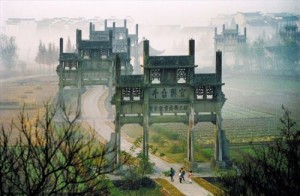 In China, because of the influence of Confucianism, filial piety has always been regarded as an absolute necessity for any human being. In traditional Chinese opinion, the family is far more important than the individual. So in Confucian theory people must always consider the whole family first, especially the parents, rather than indulging their own feelings or needs.
In China, because of the influence of Confucianism, filial piety has always been regarded as an absolute necessity for any human being. In traditional Chinese opinion, the family is far more important than the individual. So in Confucian theory people must always consider the whole family first, especially the parents, rather than indulging their own feelings or needs.
Traveling in Huizhou presents you with the opportunity to listen to many stories that focus on and praise filial piety. When traveling in Huizhou you can also visit some large memorial archways with architecture that is themed after the concept of filial piety.
Feminine Chastity:
In ancient times, chastity was considered the most important virtue for a woman to uphold and we believe that there are still many people who hold this opinion in modern China today. The appearance of Xin’an Li theory in the Huizhou region meant that women in this area suffered more under the rules of chastity.
Most of the men in the Huizhou region travelled out of the village to do business, and thus left their wives at home to serve their parents and raise the children. They might only come back once a year, or sometimes even less frequently. It was without question that, no matter what, the wife must remain chaste whilst the husband was away. Once her honor was threatened, she had to die rather than be violated to express her loyalty to remaining chaste. If a woman’s husband died young, the only way for her to properly remain a morally upright and chaste woman was to become a widow for the rest of her life.
You will find many archways that use and praise the theme of feminine chastity in their architecture, and many stories use this theme as well. For example, there are 94 memorial archways in Shexian, among which 34 of them honour the concept of feminine chastity.
2. The Clannish concept
When you visit the Huizhou region, you will find the most important buildings there are the Ancestral Halls. There are usually several Ancestral Halls in one village, each one connected to a different family. Some villages just have one Ancestral Hall, and thus almost all of the people in the village will have the same family name.
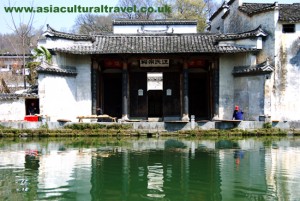 The Ancestral Hall is a kind of memorial temple for a clan to worship their ancestors. In Huizhou, many big families were made up of immigrants. They had different reasons to leave their hometowns and to finally settle down in the Huizhou region, the most common reason being the war. There were also a group of immigrants who were originally officials allocated to the Huizhou region but who didn’t leave after their tenure expired.
The Ancestral Hall is a kind of memorial temple for a clan to worship their ancestors. In Huizhou, many big families were made up of immigrants. They had different reasons to leave their hometowns and to finally settle down in the Huizhou region, the most common reason being the war. There were also a group of immigrants who were originally officials allocated to the Huizhou region but who didn’t leave after their tenure expired.
So why did they choose Huizhou as their final destination? And why did they prefer to stay there rather than go back to their hometown? We don’t think they had decided on Huizhou as their final destination when they first immigrated. But on their journey, after seeing so many different places, the Huizhou region undoubtedly seemed the most appealing and thus won prize place as their new and final home. If you look at a map of China, you can see that the most famous mountain in China, Mt. Huangshan, is located in the middle of the Huizhou region. In this region, mountain stands beside mountain and river crosses river. Thus it is considered a good place to settle down according to Chinese Feng Shui theory (an old philosophical and somewhat superstitious system that aims to create a better life by managing the surrounding environment), and what’s more, there were plenty of fields and a fruitful climate for farming.
According to the records kept of big families in Huizhou in the late Ming Dynasty, the most populous clans were Wang, Cheng, Wu, Hu, Bao, Li, Fang, Xu, Jiang and so on. Each family started with one ancestor and expanded over centuries to create hundreds or perhaps even thousands of new families.
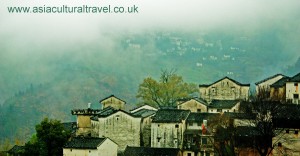 There are two main principles denoted in the clannish concept in Huizhou:
There are two main principles denoted in the clannish concept in Huizhou:
- All of the people in the clan should take care of each other. Since the clan was basically one big family, all of the members of the clan were relatives. If someone in the clan got into trouble, the whole family should help them.
- The clan was responsible for handling all of the important affairs and resolving all of the disputes among its members. Usually each clan had an elder (an older man) as their leader, who would make the final decisions for the whole clan. If members had disputes, no matter what they were about, they could ask the leader to give the final judgment.
3. Mercantilism
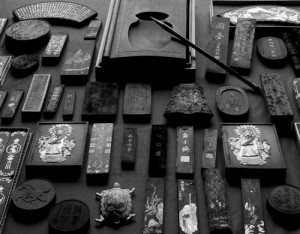 There is no doubt that the success of the Huizhou merchants provided the foundation for the booming growth of Hui culture. The Huizhou merchants have more than 600 years of history behind them. In the Southern Song Dynasty (1127-1279), the imperial capital moved to Lin’an (now Hangzhou in Zhejiang Province), which was not far from Huizhou and easy to transport merchandise to both by road and by river. According to some historical records, Hui merchants were engaged in trade practically everywhere by the beginning of the Southern Song Dynasty. They traded in tea, ink, paper and all manner of goods. In ancient Huizhou, it is said that, on average, a boy in his twelfth or thirteenth year had already begun doing business as an apprentice of his relatives in the same clan. Huizhou merchants usually focused on small scale trades, but tried to make the best quality products. The Huizhou Chronicle describes Huizhou merchants as “properly dressed, well-spoken, fully aware of price, knowing when is the good time to buy and sell, and getting extra profits from selling local goods at other places.” ( These records were taken during Jiajings reign (1796 – 1821) in the Qing Dynasty.)
There is no doubt that the success of the Huizhou merchants provided the foundation for the booming growth of Hui culture. The Huizhou merchants have more than 600 years of history behind them. In the Southern Song Dynasty (1127-1279), the imperial capital moved to Lin’an (now Hangzhou in Zhejiang Province), which was not far from Huizhou and easy to transport merchandise to both by road and by river. According to some historical records, Hui merchants were engaged in trade practically everywhere by the beginning of the Southern Song Dynasty. They traded in tea, ink, paper and all manner of goods. In ancient Huizhou, it is said that, on average, a boy in his twelfth or thirteenth year had already begun doing business as an apprentice of his relatives in the same clan. Huizhou merchants usually focused on small scale trades, but tried to make the best quality products. The Huizhou Chronicle describes Huizhou merchants as “properly dressed, well-spoken, fully aware of price, knowing when is the good time to buy and sell, and getting extra profits from selling local goods at other places.” ( These records were taken during Jiajings reign (1796 – 1821) in the Qing Dynasty.)
Huizhou boasts the perfect climate for producing several famous teas, including Huangshan Maofeng and Qimen Black Tea. So tea has always been one of the most important goods exported for sale from Huizhou. .
However, Huizhou people apparently were not only capable of trading in natural produce, but also manufactured good quality products by using superior technology in order to occupy and dominate the Chinese market. The writing brush, ink stick, paper and ink stone, referred to as“the four treasures of the study”, were star products in the Huizhou region. Even now, they still produce the best ink and paper you can find in China.
The booming period of economic growth caused by the Hui merchants took place during the Ming (1368-1644) and Qing (1644-1911) Dynasties, and that is the reason why most Hui villages are composed of houses built in these two dynasties. In ancient China, no matter how rich you were, businessman as an occupation was still not considered as good a title as official or scholar. To enhance the social standing of their family, some Hui merchants used their wealth to purchase official positions, and almost all Hui merchants chose to provide their predecessors with a good education. Their wish was to hopefully promote more of their family members into positions as officials and scholars, and this practice produced many Hui officials and scholars during the Qing Dynasty.
4. Hui Architecture
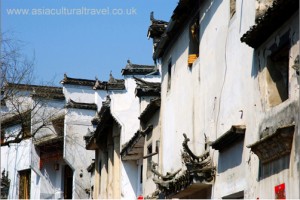 When talking about Hui culture, it is inevitable that one should make mention of the fantastic Hui architecture. Not to mention that the Hui architecture is the most extant and well preserved type of Hui art that we can see nowadays.
When talking about Hui culture, it is inevitable that one should make mention of the fantastic Hui architecture. Not to mention that the Hui architecture is the most extant and well preserved type of Hui art that we can see nowadays.
In ancient times, the standard of residence permitted was officially stratified according to the house owners’ social position. Any houses constructed beyond these restrictions were considered an offense and the owners would be punished accordingly. Thus, according to these laws, merchants could not build large or luxurious houses for their families. However, the cunning Hui merchants found another way to show their wealth.
Brick-sculpture, woodcut and stone carvings are considered the three essential artistic components of Hui architecture. In a wealthy family’s mansion, you can find beautifully carved decorations everywhere – on beams, windows, pillars, doors and even walls. You will find vivid animals, people, flowers; you may even find that some of the carvings depict stories.
The richer the family was, the more elaborate and delicate the carvings were that decorated their mansion. The price of a piece of very good brick-caving product by a skilled craftsman might be equal to the price of an acre of field.
A typical Hui residence was a compound comprised of four two-story buildings on four sides of an inner courtyard or patio. The roofs of all of the buildings were on an incline towards the inner courtyard in order to drain any water towards the patio. Hui people believed in water as a symbol of or metaphor for wealth. So they wanted all of the rainwater to flow into their inner yard, in order to symbolize and hopefully foreshadow wealth coming into the family.
The traditional Hui dwelling is a closed compound, with solid and high walls to guard against theft. There are only small windows on the walls for aeration. The outer walls are called ‘horse-head walls’ and they are painted white with black roofs. These high walls function to prevent the spread of fire.
Discover more about the Culture of Huizhou on our travel: Explore the Ancient Chinese Villages in the Huizhou Region
